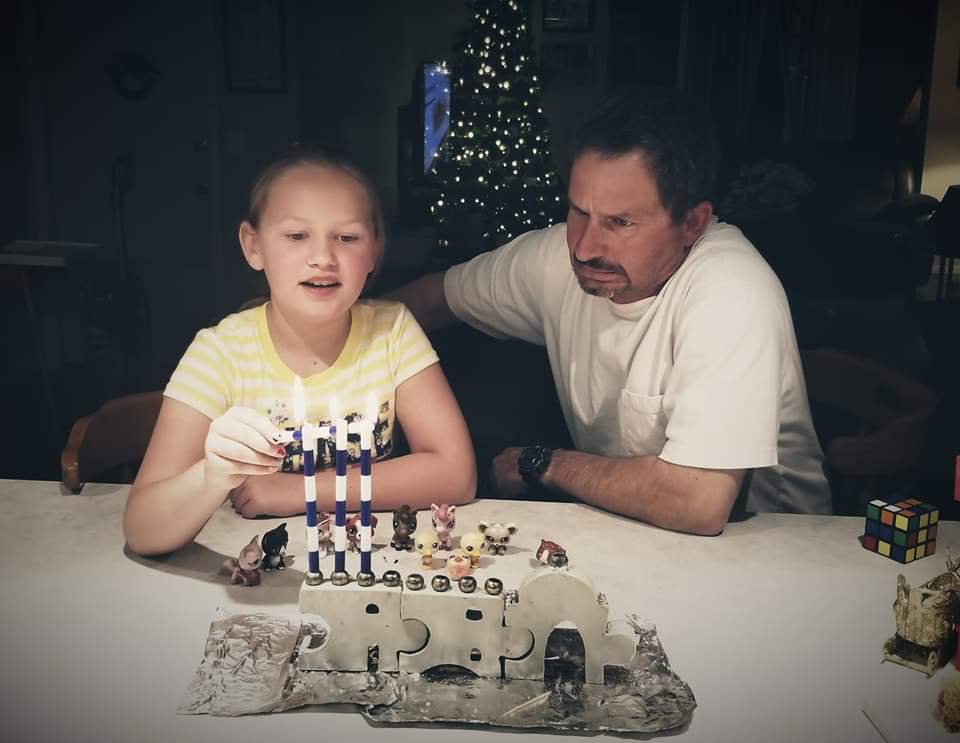By Jordan Darling, Editor-in-Chief
The dreidel spins on the worn tabletop a blur of cobalt blue and white, the kids shout in delight as their dreidel lands on its side, the spinner groans and slides half of his Hanukkah gelt into the middle.
The smell of latkes wafts through the air and the room is full of laughter and joy. The first night of Hanukkah has begun.
The excitement is tangible as the menorah is brought out for the first time that year. The family gathers around and recites the familiar Hanukkah prayer as the shamash touches the first candle and they are both left ablaze throughout the night until the wax melts to the bottom and the flame is extinguished.
The winter season is brimming with holidays, the stores are full of jolly Santa’s in red coats lined with soft white fluff. We are constantly reminded that it “Tis the Season” and our ears are assaulted with Christmas music starting in November lasting through December.
There is rarely mass recognition of other holidays that fall during the holiday season. The Hindu holiday of Diwali, the festival of lights symbolizing the victory of light over darkness, good over evil, and knowledge over ignorance, falls in November for 2020. Kwanzaa a weeklong celebration focusing on African heritage and African American culture also falls in this time frame.
Being surrounded by other cultures and religions is a privilege and a unique situation. Sharing the story of Hanukkah is about sharing a culture and a faith that stems back hundreds of years.
Hanukkah, or the Festival of Lights, celebrates the miracle of the oil in the second temple lasting for eight nights. In approximately 200 B.C. the Jewish religion was outlawed by the Syrian-Greek king and the Jewish people began to practice their religion in secret.
There was a large-scale rebellion led by Judah Maccabee and against the odds the band of rebels drove the Syrians out of Judea (the land of Israel) and during the rededication of the second temple there was only enough oil to last the night and through the miracle of G-d, the oil lasted for seven days and eight nights, the miracle of lights.
Hanukkah is one of the lesser holidays in the Jewish faith and it does not appear in the Torah. The seven day holiday is more of a historical celebration revolving around the miracle of light and G-d’s grace and is usually celebrated in December.
Traditionally it is celebrated by lighting the Hanukkah menorah, eating food cooked in oil, and exchanging gifts with family and friends.
In an article on Chabad.org, Rabbi Menachem M. Schneerson explained the difference between the temple menorah which has seven branches and the menorah used on Hanukkah which has eight, “Eight represents a step beyond nature: the supernatural, the transcendent. The Temple was a place of holiness and revealed G‑dliness, and the seven lights of the menorah were enough to light up the Temple and the world around it. Nowadays, there is more spiritual darkness in the world, and G‑dliness is concealed.
We need to reach beyond the limitations of nature and tap into a higher level of holiness in order to illuminate the darkness outside. The eight lights of our Chanukah menorahs, burning in the night, transform the world into a G‑dly, light-filled place.”
Gathering together in the living room the family fills the couch and chairs, small children are pulled into laps, teenagers are sprawled on the floor and the story of Hanukkah is shared with a new generation. The menorah, already lit, sits in the living room window flickering and sharing the light with the outside world.

